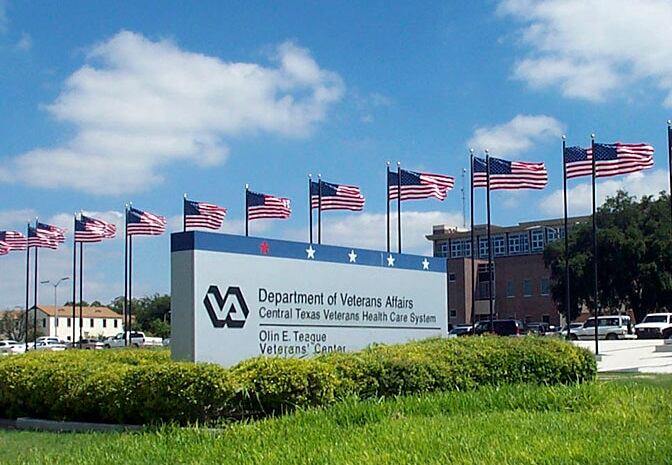WASHINGTON — The U.S. Navy, U.S. Air Force and cyberwarfare must start taking a larger share of the defense budget if the U.S. is going to compete with China, two sea power advocates in Congress said last week.
Speaking at a recent Hudson Institute virtual event, House Seapower and Projection Forces Subcommittee Chairman Joe Courtney, D-Conn., said the Pentagon is at an “inflection point” over whether the Navy, Air Force and cyber “are going to take a larger portion of the pie chart” when the fiscal 2022 budget is released this spring.
“That conversation has to happen,” he said.
The comments align with a growing consensus inside the Pentagon that to meet the challenge from China’s rapidly expanding blue water fleet, paired with investments in long-range anti-ship missiles and bombers, the Navy must grow substantially.
In the waning days of the Trump administration, the Pentagon floated the idea of a Navy in excess of 500 ships, which would include a heavy investment in submarines, smaller frigates, and a suite of unmanned surface, underwater and aerial vehicles. Today’s fleet stands just shy of 300 ships.
In December, Chairman of the Joint Chiefs of Staff Gen. Mark Milley said he would advocate for “heavy investment” in sea-, air- and space-centric platforms, suggesting there will be “bloodletting” in other areas of the budget.
Courtney and the sea power subpanel’s ranking member, Rob Wittman, R-Va., pointed to China’s emerging plans to further militarize its Coast Guard and grow its aircraft carrier fleet as the two lawmakers outlined where they want to see increased investments.
“I’m optimistic that we’re going to have a solid shift that is really overdue, but clearly that first budget [from President Joe Biden is where] we’re gonna do everything we can to make sure it’s in a good place for this Congress,” Courtney said.
Between the Obama administration’s goal of a 355-ship Navy and the 500-ship target, Wittman touted the idea of 405 manned ships by the end of the 30 years ― which also emerged in Trump’s final days in office ― as a more feasible path.
But that idea for 500-plus ships — which was a rhetorical 500-ship Navy that included unmanned vehicles that would not meet any reasonable definition of a battle force ship, but were intended as a means of framing the scale of the undertaking required — has not sat well with everyone in Congress.
“When you talk about now 500 ships, sometimes some members of Congress kind of get turned off by that,” Wittman said. “I think we need to be talking clearly about the plan, [which] will have 405 manned ships, and what does that do for us to counter the Chinese. The communication needs to be simple and straightforward.”
‘The only way you do that is with ships’
Growing the Navy will be a challenge, especially as some high-capacity Cold War-era ships begin to retire over the coming decade.
In January, Defense News reported that a wave of ship retirements built at the end of the Cold War means the Navy is facing a decline in both the number of ships and the number of vertical launching system missile tubes it can field by the early 2030s.
Between the Ticonderoga-class cruisers, the first-generation Arleigh Burke-class destroyers, the Ohio-class guided-missile submarines and the Los Angeles-class submarines, the Navy stands to lose about 70 ships with nearly 5,500 vertical launching system cells. Today, based on the last official 30-year shipbuilding plan, it appears the Navy will replace those ships ― and their tubes ― with about 65 ships and submarines that have anywhere from 1,800 to more than 2,000 fewer VLS cells.
Both Courtney and Wittman have a significant stake in the Pentagon’s push to start building more Virginia-class submarines. The Navy has stretched the supplier base and labor force in the submarine-building industry just to reach two Virginia subs per year.
The Virginias, which are a joint undertaking between Connecticut’s General Dynamics Electric Boat and Huntington Ingalls Industries’ Newport News shipyard in Virginia, are seen as core to maintaining the Navy’s presence inside areas such as the South China Sea, which is within reach of Chinese anti-ship missiles and bombers.
In October, then-Defense Secretary Mark Esper said the Virginia class must be the Navy’s top priority.
“If we do nothing else, the Navy must begin building three Virginia-class submarines a year as soon as possible,” he said during an event at the Center for Strategic and Budgetary Assessments.

Both lawmakers plan to continue pushing for an increase in Virginia-class submarine production, and they support planning for the next-generation submarine.
“The question is what do we need and the next generation of submarine that has the right extension of capability that gives us that continued undersea strike advantage,” Wittman said. “But how do we do that at a at a price tag that allows us to build the number of platforms that we need.”
In an interview with Defense News in early February, Wittman said he was encouraged by the Biden administration’s continued focus on China, but added he will continue to push for a larger fleet. That conclusion, he said, should be obvious to anyone who looks closely at the strategic situation.
“I have been pleased so far in the preliminary conversations that I have had with the secretary of defense, [Lloyd Austin], with the deputy secretary of defense, [Kathleen Hicks], and others in the incoming administration about what their plans are,” Wittman said. “I think if you look at Gen. Milley’s comments, you see that if we’re going to be serious about countering the Chinese threat, it’s going to be in the Pacific. And the only way you do that is with ships, and the capability to create a risk for China through the payloads on those ships.
“So I think that [the Biden administration] will probably come to the same conclusions.”
Joe Gould was the senior Pentagon reporter for Defense News, covering the intersection of national security policy, politics and the defense industry. He had previously served as Congress reporter.
David B. Larter was the naval warfare reporter for Defense News.




